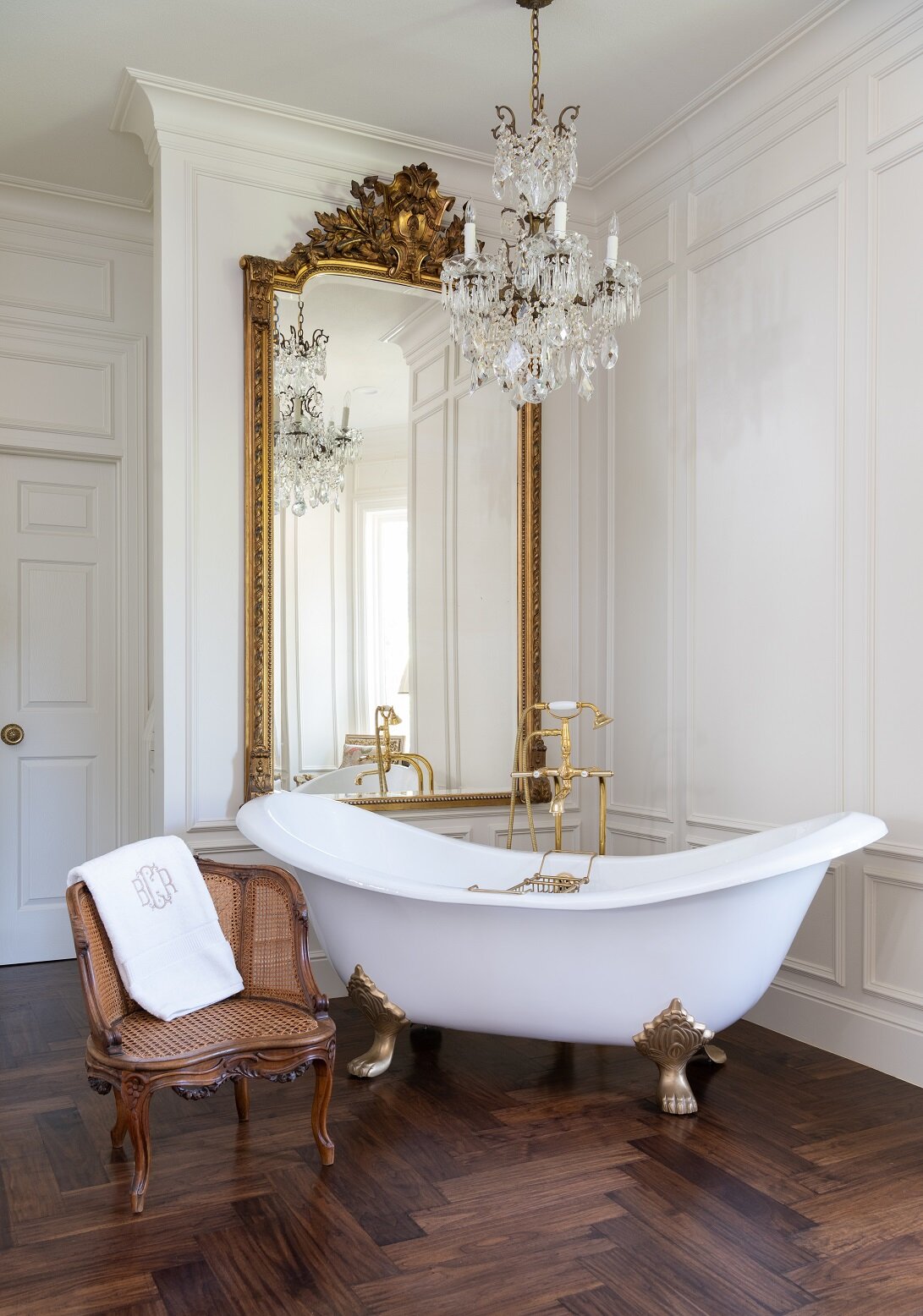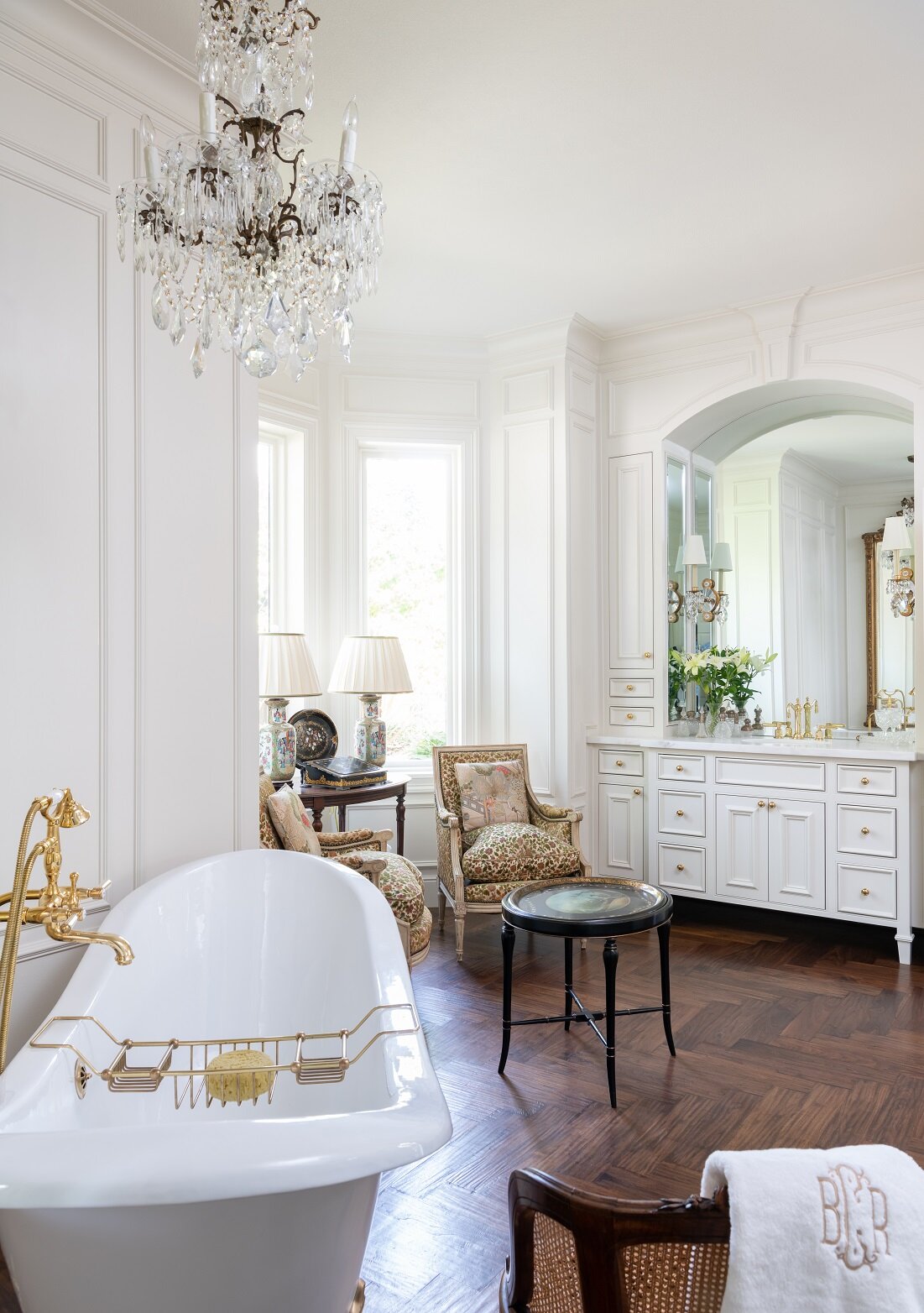On the left, you can see a painting that our client inherited, which gave us inspiration for the home’s color scheme.
While there are many talented interior designers in Dallas, not all of them will necessarily be the right fit for your project. That’s why asking the right questions when you interview them is important. Here are some questions I would personally ask if I were hiring a designer for my home.
1. What are their credentials?
This home recently won 1st Place for Best Entire Residence Over 5,000 Square Feet in the Dallas Design Ovation Awards.
I’d want to know that my interior designer had a degree from a reputable university, was a registered interior designer, a member of ASID, and had at least ten years of experience. It’s also helpful to see if they’ve been published in magazines and won interior design awards. When you talk to their references, ask: “Would you hire this interior designer again?”
2. Is this person a good fit for my project?
I would interview three to five designers to find the right fit. You can get a sense of the designer’s style and taste by asking them about their favorite colors, their favorite house they’ve designed, and their favorite places to travel. In most cases, you want a designer who can work with any style. However, if you’re passionate about a specific style, it’s not a bad idea to find a designer who specializes in it. During the interview, ask the designer if they’ve done projects similar to yours in the past. If they say yes, have them show you before and after photos.
Any good designer should ask questions to get to know you and how you live in your home when you meet them. It’s also a good idea to find out if the designer is willing to work with your favorite pieces.
We hung the client’s chandelier and antique mirror over this tub. The mirror helps to reflect light into the space.
It’s going to be important that you like your interior designer; you’ll be spending a lot of time with them. That said, I would not work with a friend or family member. It’s better to keep this as a business relationship (although you may very well become friends with your designer afterwards).
3. How do they charge?
No two designers will charge in the exact same way. Some of the different payment methods you see in the interior design industry include: charging by the hour, charging a mark-up on products, charging a flat flee, charging a percentage of the total project cost, or a combination of any of these. Designers who offer a flat-rate option usually have stipulations, such as a limit to the number of adjustments you request.
My love for European antiques can be seen in several of our projects, such as this French Chateau in University Park.
Another thing to consider is that not all interior designers offer the same services. Some designers focus specifically on design consultation for existing homes. My firm is a full-service design firm, which means that my team and I have the experience to manage an entire home project, from planning and construction to design and installation. Full-service design firms can also do remodeling jobs.
4. What is the designer’s process like?
Ask them: how will you present your selections to me? If I were hiring a designer, I’d like for them to give me two color scheme options for each room.
Another good interview question is to ask the designer about a mistake they made in the past. How did they resolve it? Did they learn from the experience? This gives you important insight into how the designer will handle bumps in the road. To prevent potential problems, my firm double-checks items before we order to make sure everything will fit. You can’t be too detailed in this business: it’s important to document everything you do and require signatures for all deliveries.
You also want to find out who else works with the designer. Do their assistant designers have degrees as well? Who will be your primary point of contact? Personally, I wouldn’t work with a designer “so big” they’re farming out the design work to junior designers.
My design firm has experience with both newly built homes and remodels, like this award-winning bathroom remodel.
Don’t be afraid to ask lots of questions at your interview. Your goal is to find a designer you enjoy working with and who is invested in helping you discover your own personal style, rather than just recreating their own style in your home! If you ask several of the questions discussed here at each of your interviews, you’ll find the perfect match for your project in no time.
At my design firm, we offer a free consultation to get to know you and your project before we start working together. We have a lot of experience working with a variety of styles, from traditional to transitional and contemporary. If you’re currently looking for a Dallas-based interior design firm, give us a call at 214-651-7665. You can also reach us by email at info@chambersinteriors.com.





















